The outcome of a fight between lion and tiger would depend heavily on the individuals–their age, breed, mood, fighting style, and physiology. However, historical evidence suggests that tigers are a bit more likely to win the duel.
If I ask you who is the king of the jungle, what would you say? “Lion” you will reply with confidence. Well, that’s what all of us have been taught since childhood – the lion is the king of the jungle.
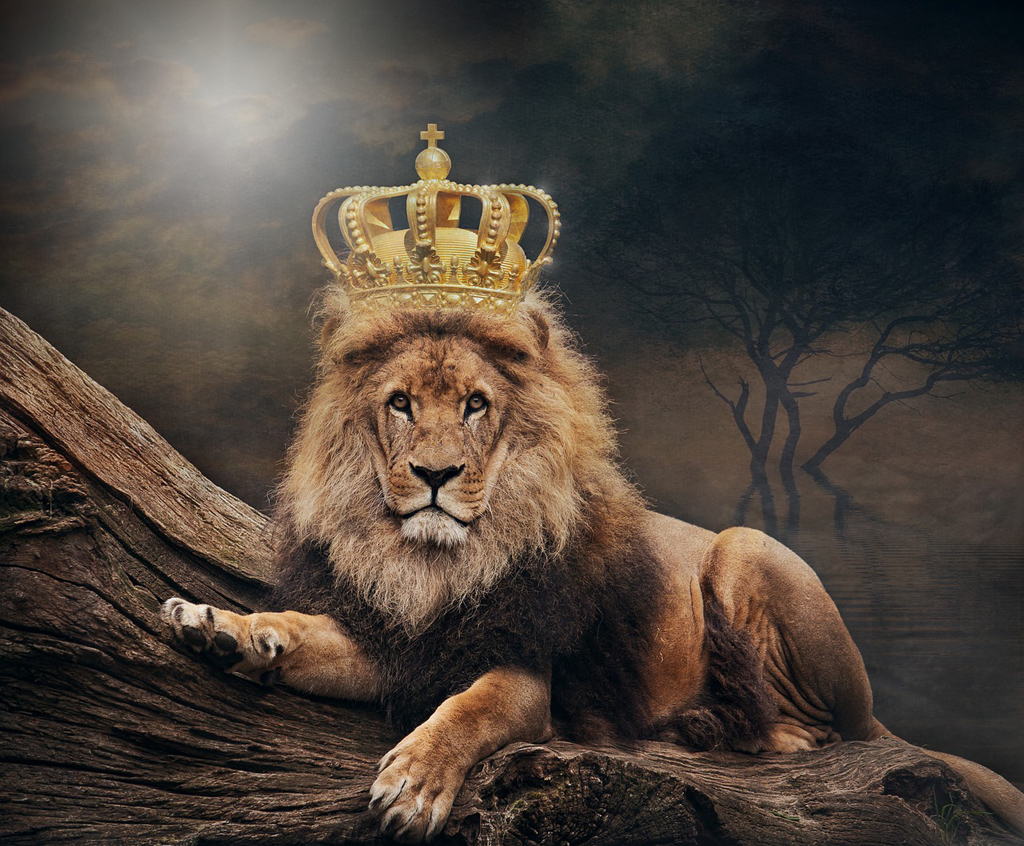
So, is the majesty of the lion unmatched? Are there no other contenders for such a claim over the wild kingdom? Its cousin, the tiger, is arguably more ferocious and more powerful. So, who is the true king between them? We will try to find answers to this question from both a historical and a scientific perspective.
When it comes to animals in the wild, lions and tigers are two of the most intimidating predators on the planet. They are infamous for preying even on humans, so before we get into the captivating rivalry of these two super cats, let’s take a look at them individually.
Tigers
Tigers are among the largest land predators and generally outsize lions. Unfortunately, the tiger population has shrunk over time due to unabated poaching, and they are now only found in select tropical deciduous forests of Asia. The beautiful stripes on each tiger are unique and serve as identifiers for tigers, similar to our fingerprints!
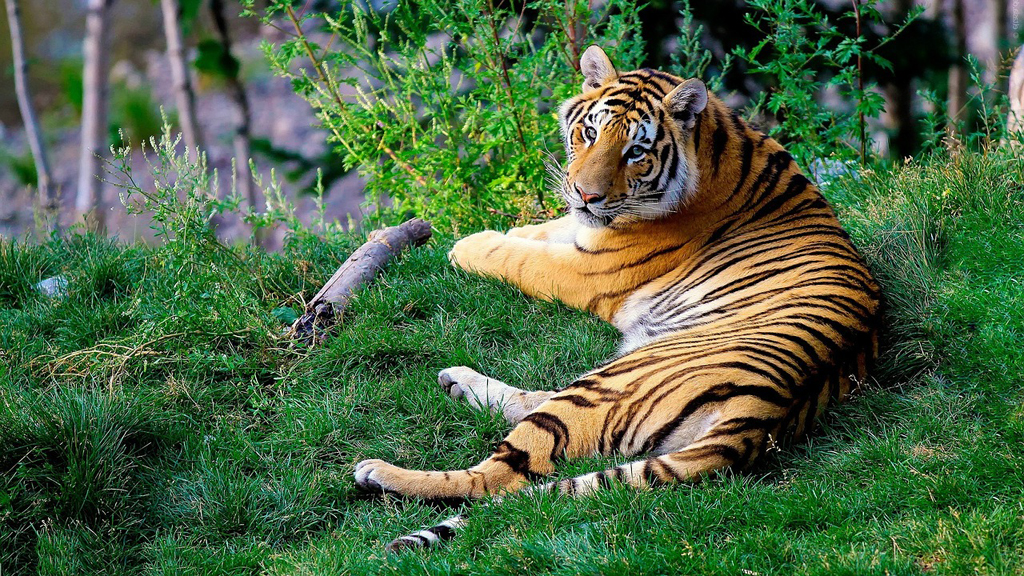
Tigers are solitary creatures that hunt and live alone most of their lives. They have a strong, muscular body that is agile and flexible. Tigers have excellent eyesight and can see their prey even in the dark.
Another notable feature of tigers is that they can easily climb trees and swim, even in fast-flowing rivers. Tigers are known to eat fish, tortoise, and even alligators in the wild! Tigers are competent predators adapted to different ecosystems, from swimming in lakes to climbing trees. They can hunt their prey in broad daylight or ambush victims in the dark.
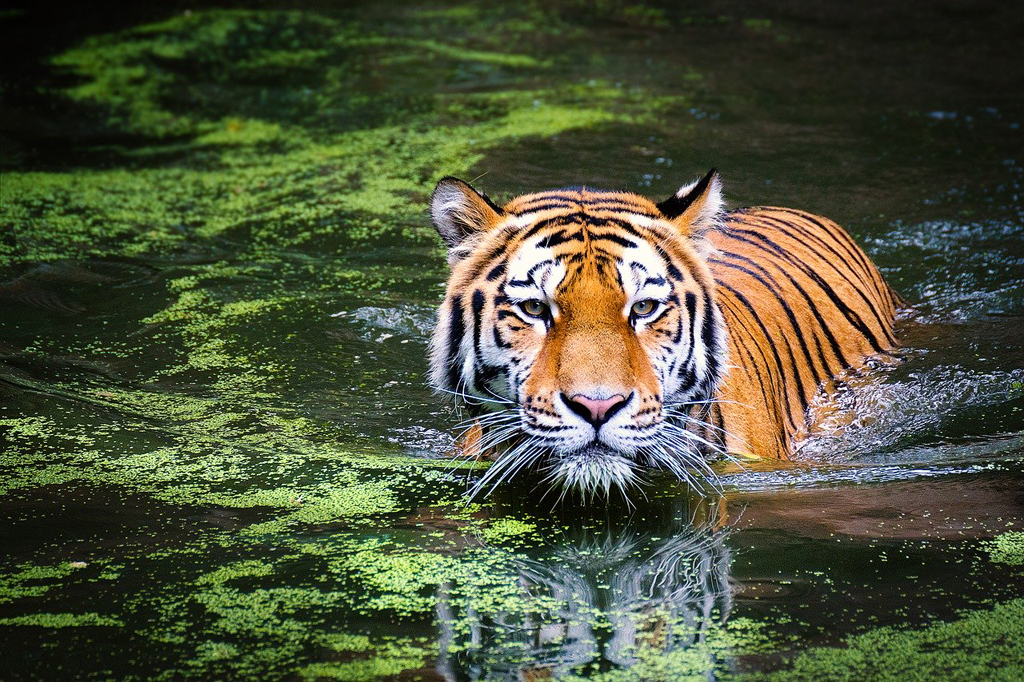
Also Read: Why Is Tiger The National Animal Of India?
Lions
Lions are prodigious cats found on two continents: Asia and Africa. What’s striking about male lions is the distinctive thick and majestic manes around their neck.
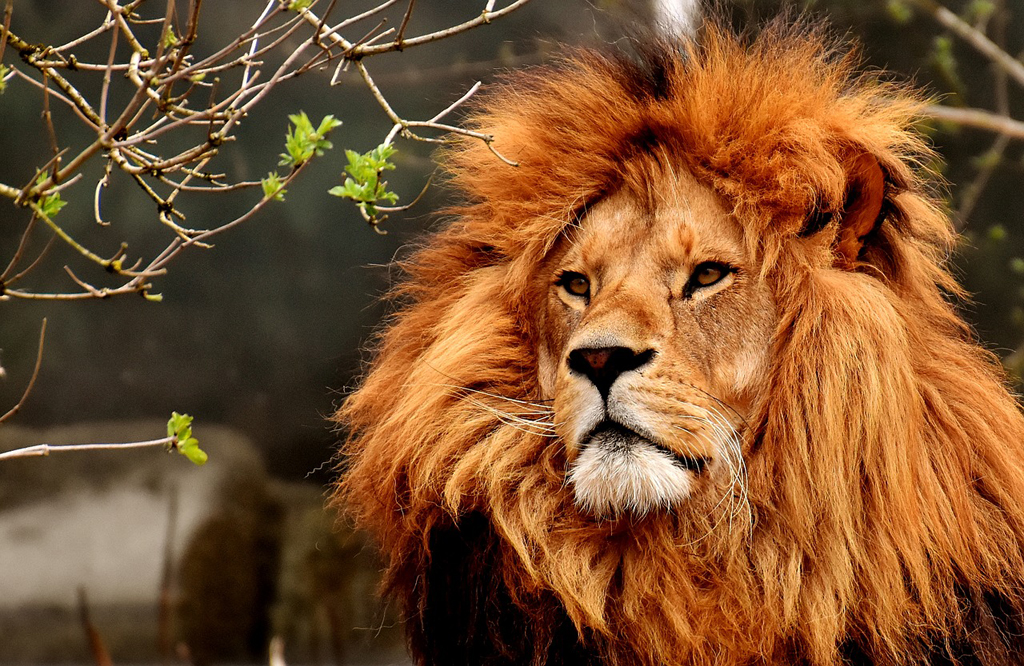
Pride Of Lions
In contrast to the lifestyle of tigers, lions are very social, living in families called prides. Prides generally consist of one or two adult male lions with five to seven lionesses and their cubs. Male lions spend their lives defending their pride and protecting themselves from a hostile takeover by other vagrant lions. Interestingly, lionesses are the ones who actively hunt. At the same time, male lions only come into the picture when the need arises—like putting down a large mammal such as a giraffe or a buffalo.
Lion prides manifest great teamwork. Each member of the pride knows their role in hunting and other expeditions. Some go after the prey while others surround the prey so that it cannot escape. An adult male’s role is more likely to intimidate and defeat the biggest prey. For example, while hunting a zebra or a giraffe, a male lion would growl at the prey and drive them in a certain direction, where lionesses wait in ambush.
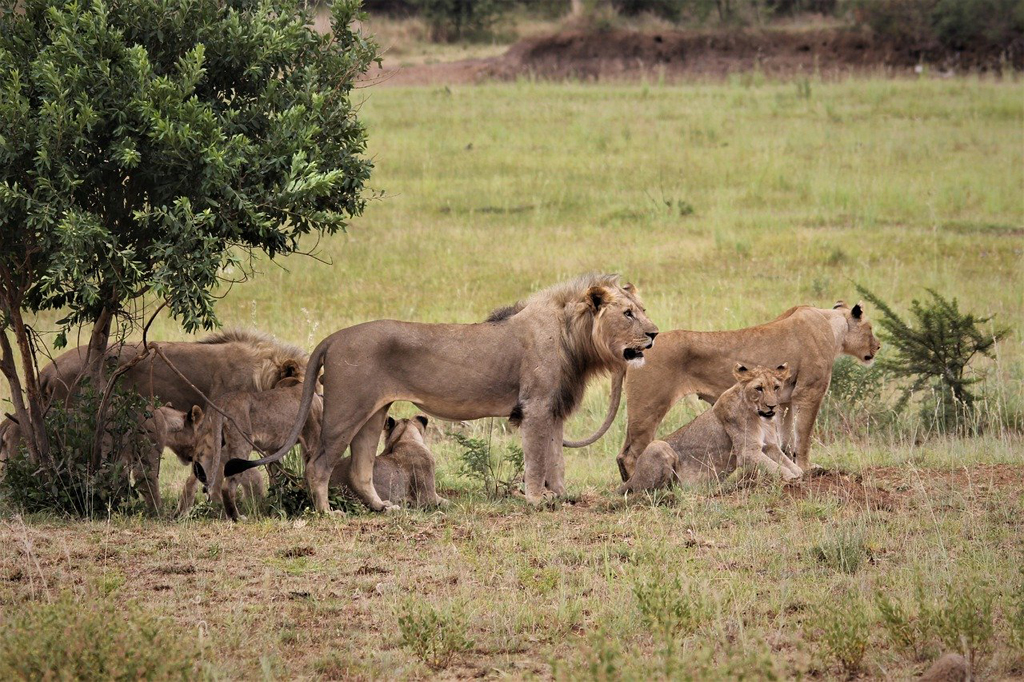
It must be remembered that lions are fighters from birth. They spend most of their lives protecting their pride and battling any opponent who attempts to take over the pride. Such frequent clashes make male lions experienced and fearsome fighters. Another intimidating aspect of lions is their fearsome roar, which can be heard up to a few miles away!
Now that you know a bit about these mighty cats, let’s make a more quantitative comparison of these two masters of the wild.
Also Read: Can A Lion’s Mane Strengthen His Sex Appeal?
Comparison Of Lion And Tiger
- Body size: Although the size of both cats differs depending on their species, a large adult Siberian tiger can reach over 10 feet in length. An adult African lion, on the other hand, can grow up to 9 feet in length. A mature Siberian tiger can easily weigh over 600 pounds, while an adult African lion generally weighs under 500 pounds. Roughly speaking, a tiger is 15-20% larger than a lion.
- Bite force: Although both lions and tigers have approximately 30 teeth, tigers have longer and sharper pairs of fangs that can inflict a deeper wound on their opponents. Fangs of the tiger are approximately 4 inches, while lion teeth are approximately three inches in size. Thus, the bite force of a tiger is greater than that of a lion.
- Brain size: Research finds that tigers have larger brains than lions, relative to their body size.
- Mane: Male lions have a distinctive mane around the neck. Many experts believe that this mane gives the lions a decisive advantage in a battle since an opponent cannot easily access the carotid artery or the cervical vertebra. Tigers have no such mane and are therefore more vulnerable to attacks on the neck.
Also Read: What Makes A Lion’s Roar So Loud And Intimidating?
Do Lions And Tigers Crossover In A Natural Habitat?
Lions and tigers generally do not cohabit in the same geographical regions, but there are places in India where lions and tigers cross paths. Because of unabated poaching, tiger populations have declined significantly.
Colin Tudge, a renowned biologist and science writer, postulates that in the past when the populations of the two cats were abundant, tigers and lions competed for the same prey. There were efforts in the past (and still ongoing) to co-locate lions and tigers in the same habitat. For example, during colonial rule in India, the Maharaja of Gwalior (prince of the state) tried to relocate a few African lions to the Kuno Palpur sanctuary in India, where tigers lived. This project was not successful, as some cubs died on the way from Africa to India. Those who survived were later found dead. Some suspect that tigers killed these lions, while others claim that locals killed the lions because they turned into man-eaters upon arrival.
The Indian government has proposed the Asiatic Lion Reintroduction project to reintroduce the Asian lions to bring the rapidly depleted Asian lions from the Gir forest back to other regions, including sanctuaries where tigers live. This project has encountered several hurdles with the government of Gujarat, where the Gir forest is located, which strongly opposes the relocation of lions. One of the reasons for this refusal was the fear that the tigers would kill the incoming lions.

So far in this section, we explored the natural interaction of lions and tigers, but now let’s look at some famous fights between the two cats in captivity and the results of their bloody battles.
Famous Lion Vs. Tiger Fights
The battle between lions and tigers has always piqued the interest of humanity. Be it hunters, naturalists, historians, or even science writers like us!
Ancient Rome
In ancient Rome, lions and tigers were often pitted against each other in arenas for cruel entertainment purposes. To attract the plebeians’ attention, Roman emperors organized fights between African lions and Asian tigers in the Colosseum. Although the battles were fierce, tigers were usually victorious and killed the lions in most cases.

Ferocious Gunga
One of the most famous tigers, who is reported to have defeated about 30 lions in various encounters, was a Bengal tiger named Gunga. Gunga was a tiger of the Emperor of Awadh in India, who transferred this wild tiger to a zoological garden in London. Some claim that this mighty tiger could defeat a lion in just 10 minutes!
Gunga, also called Nina Saheb, has one famous tale of bravery. Harper’s Weekly in 1859 reported that the tiger in captivity in London, before one of those lion-tiger fights, the tiger had an encounter with the keeper. For some reason, Gunga attacked the keeper. In his defense, the keeper injured the tiger with a crowbar and blinded this ferocious beast in one eye. After this incident, a fight was staged, so legend has it that the tiger was partially blinded before its epic duel with the lion.
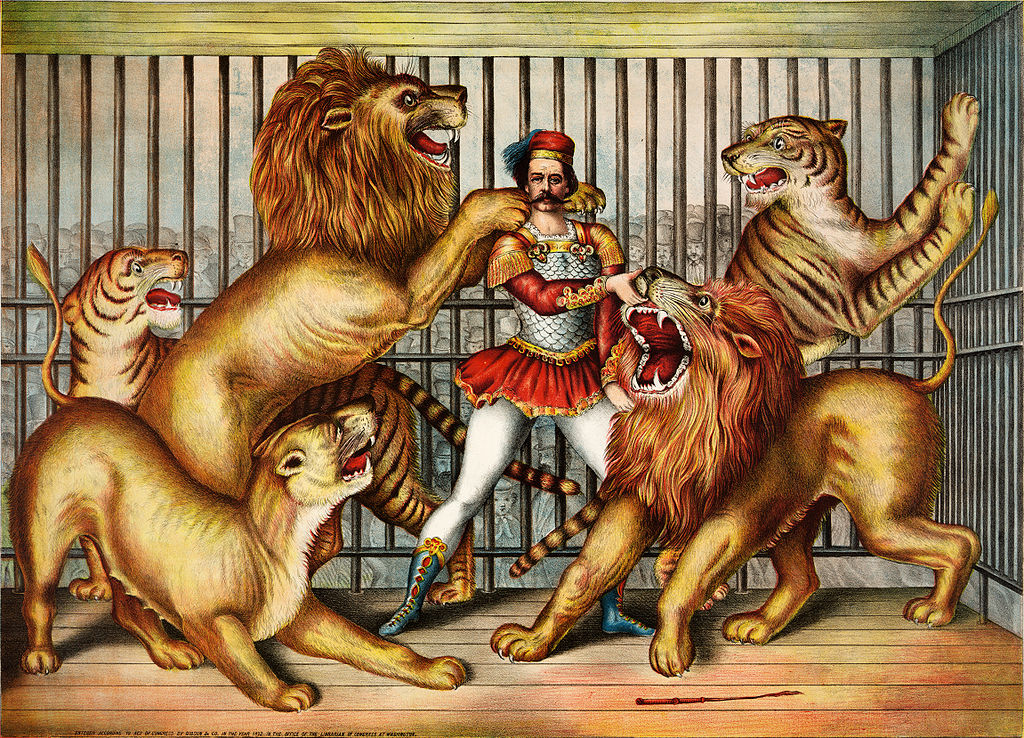
When the fight began, the tiger aggressively attacked the lion, and their fight lasted for some time before the tiger grew tired. Lions generally have greater stamina, and the lion took this opportunity to gain an advantage over the tiger. It pounced on Gunga, but the legendary tiger showed tremendous resilience. While lying on its back, Gunga used its back legs to deliver a swift counter strike to the lion. It tore open the lion’s stomach with these strikes, causing it to bleed heavily and die soon after.
When A Bengal Tiger Triumphed Over The Barbary Lion
Another gripping event of the rivalry between lion and tiger occurred at the end of the 19th century. Gaekwad of Baroda, prince of a small state in colonial India, organized a fight between the two super cats in an amphitheater. Gaekwad had placed a sizeable bet on the Barbary lion brought from Algeria’s mountains to fight with a royal Bengal tiger.
During the fight, both cats sustained injuries. Interestingly, the tiger withdrew from the mighty lion but later returned to fight again.
Despite the great valor displayed in the long fight with the tiger, the Barbary lion succumbed to the injuries inflicted by the ferocious Bengal tiger and eventually died. Gaekwad had to pay 37,000 rupees, roughly the equivalent of today’s 1 million dollars, and accept the tiger as the true king of the cat family!

Juno The Great
So far, we have only discussed encounters in which the tiger emerged victorious, but this is not always the case. There is the saga of one brave lion called Juno, who is said to have killed as many as 13 tigers in various encounters. It is unclear whether Juno killed tigers in one-on-one encounters or collusion with other lions.
Lions hunt in packs, which provides a clear advantage over tigers, i.e., when lions are in a group, and the tiger is alone. Whatever the case may be, Juno was one of the finest and bravest species of Barbary lions that are now extinct, known for their toughness and valor.
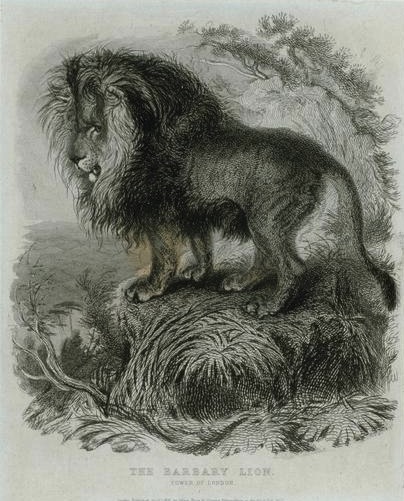
Also Read: Do Animals Have Wars Like Humans Do?
Lion Vs. Tiger: Who Is The Winner?
As already mentioned, the outcome of a fight between a lion and a tiger depends strongly on the individuals – their age, breed, their mood, their fighting style, and their physiology. Although there is no agreement among the experts about who would win, their decision favors the tigers.
Expert Opinion
An animal trainer named Alex Kerr, who has worked extensively with lions and tigers, mentions in his book that the tiger has traditionally triumphed in a fight between lion and tiger. John Varty, the owner of a private reserve in South Africa where lions rule the roost, also favored tigers over lions. He believed that tigers are superior fighters. Experts who worked with the Save China Project believed that tigers are stronger than lions in physical performance and that a Siberian or Bengal tiger would defeat an African lion.
However, not all experts assent to the tiger’s superiority. Some experts hold the opposite opinion. For example, Clyde Betty, a renowned animal trainer, said that a full-grown lion is more likely to triumph over a full-grown tiger. Well-known animal conservationist Kailash Sankhala, popularly known as The Tiger Man of India, ironically weighs more on lions than on tigers. He believes that the mane of the male lion gives them a strong advantage and serves as a shield to protect themselves from the tiger’s savage attack on the throat. Tigers have no such protection and are therefore much more vulnerable to an attack by a lion. In his book, he observes that a tiger cannot really keep up with a lion if pitted against a lion of equal size.

Summing It Up
Both cats have their own advantages and limitations. So the tiger, for example, is a lone hunter for most of its life and has more muscle mass. They are bigger and heavier in weight. In addition, they have sharper and longer fangs and claws. A tiger is slightly faster, arguably more ferocious, and definitely more agile. It can swim in the water and climb trees. Lions, on the other hand, are more resilient and brave. They have experience putting down large enemies—as big as an elephant or a giraffe—albeit in a group. Lions also have experience combatting other lions in the wild to defend their pride, something tigers lack.
Tigers are fierce predators, play it safe and quickly launch powerful attacks on their opponents. Lions first measure the strength of the opponent by striking with a single paw in duels. They usually take a little more time to go all out on the opponent. Perhaps this is because they generally have other lions as backups in the wild. Tigers are impulsive attackers who want to go all out from the beginning. Perhaps evolution has conditioned them to be more ferocious and always rely on the quick kill. Sometimes this can backfire, as a tiger could lose energy faster, and if it encounters a resilient lion, the tiger could fall victim to the lion!
Although it is not clear who the winner will be, tigers appear to be serious contenders for the King of Jungle, a designation usually reserved for lions!
How well do you know the lion-tiger rivalry?

References (click to expand)
- Frequently Asked Questions | College of Biological Sciences. The College of Biological Sciences
- YAMAGUCHI, N., KITCHENER, A. C., GILISSEN, E., & MACDONALD, D. W. (2009, August 25). Brain size of the lion (Panthera leo) and the tiger (P. tigris): implications for intrageneric phylogeny, intraspecific differences and the effects of captivity. Biological Journal of the Linnean Society. Oxford University Press (OUP).
- Shankaranarayanan, P., Banerjee, M., Kacker, R. K., Aggarwal, R. K., & Singh, L. (1997). Genetic variation in Asiatic lions and Indian tigers. Electrophoresis. Wiley.
- Women's rights convention of 1859... - RareNewspapers.com - www.rarenewspapers.com
